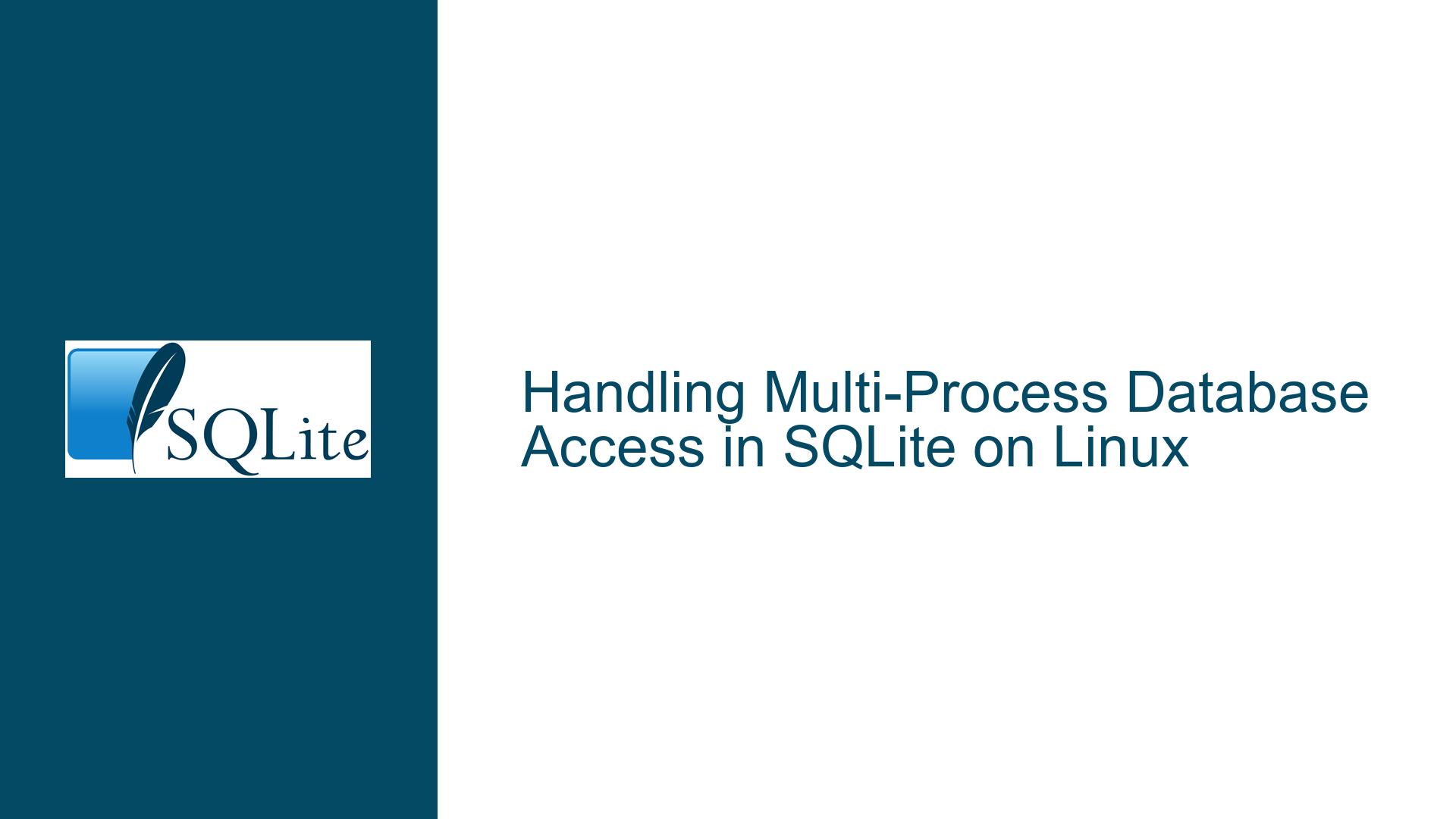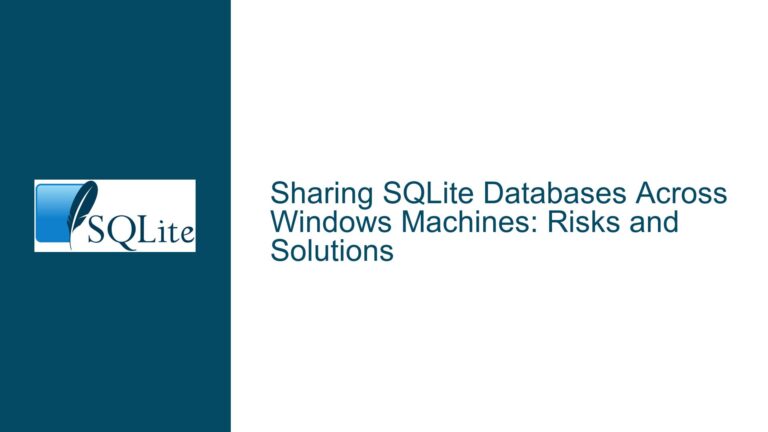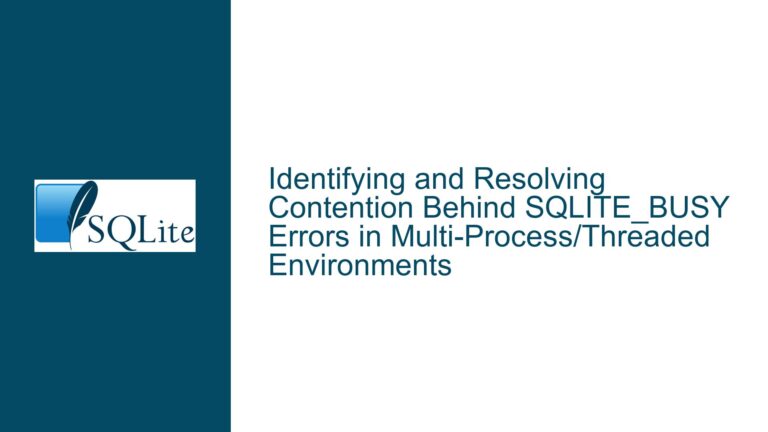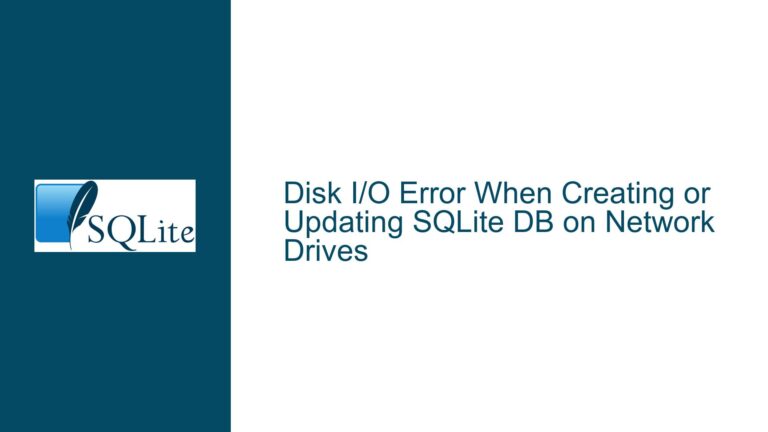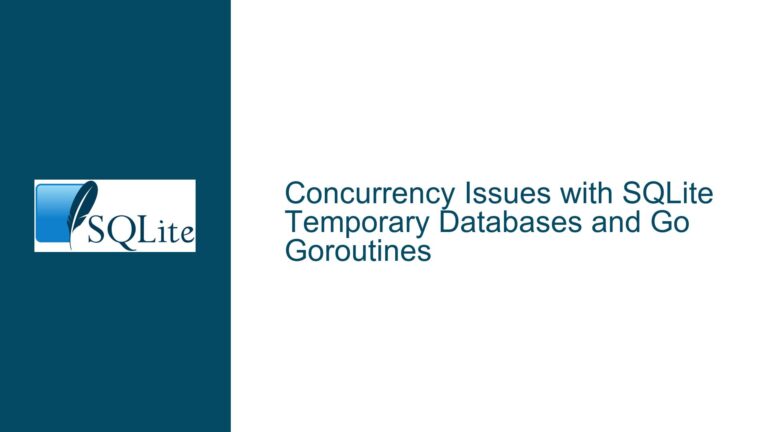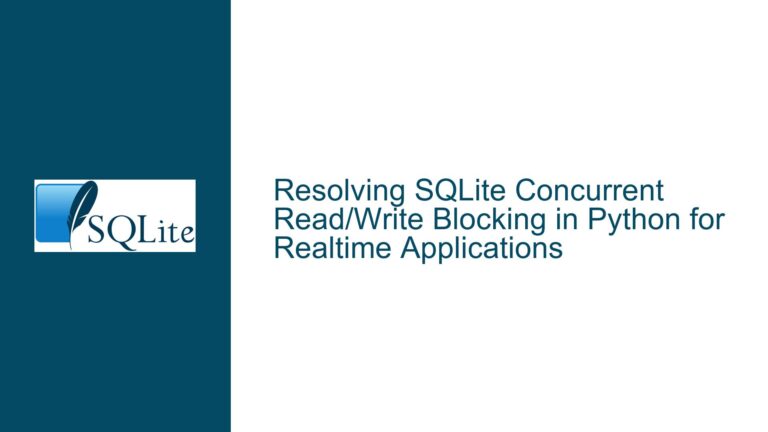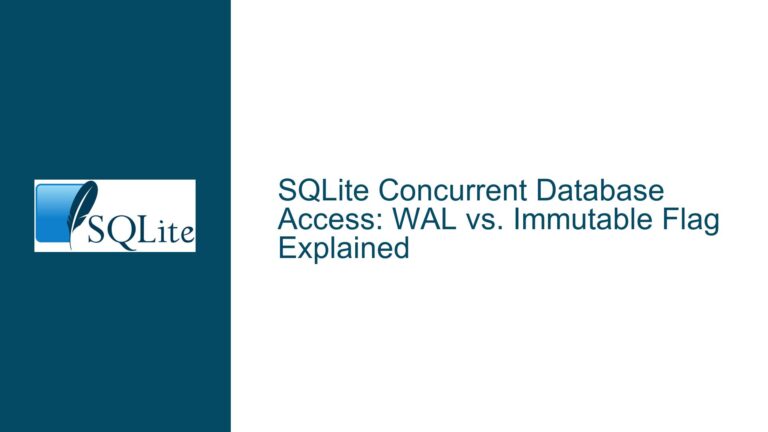Handling Multi-Process Database Access in SQLite on Linux
Understanding SQLite’s Multi-Process Concurrency on Linux
SQLite is a lightweight, serverless, and self-contained database engine that is widely used in embedded systems, mobile applications, and small-scale server applications. One of its key strengths is its simplicity, but this simplicity comes with certain limitations, particularly when it comes to multi-process concurrency. On Linux, where multiple processes may need to read from and write to the same SQLite database simultaneously, understanding how SQLite handles concurrency is crucial for ensuring data integrity and performance.
SQLite uses a file-based locking mechanism to manage concurrent access. When a process writes to the database, it acquires an exclusive lock, preventing other processes from writing at the same time. Reads, on the other hand, can occur concurrently as long as no write operation is in progress. However, this locking mechanism can lead to contention issues when multiple processes attempt to access the database simultaneously, especially in high-write scenarios.
The key to managing multi-process access in SQLite lies in understanding its locking model, the role of the WAL (Write-Ahead Logging) mode, and the impact of filesystem characteristics on database performance. Each of these factors plays a significant role in determining how well SQLite can handle concurrent access from multiple processes.
Factors Affecting Multi-Process Database Access in SQLite
Several factors can influence how SQLite performs in a multi-process environment. These include the locking model, the use of WAL mode, filesystem characteristics, and the frequency and type of database operations.
SQLite’s default locking model uses a combination of shared and exclusive locks to manage access. When a process begins a write operation, it must acquire an exclusive lock, which blocks all other processes from writing or reading until the lock is released. This can lead to contention and delays, particularly in high-concurrency environments.
WAL mode, introduced in SQLite 3.7.0, offers an alternative to the default locking model. In WAL mode, writes are appended to a separate log file, allowing readers to continue accessing the database without being blocked by writers. This can significantly improve concurrency and performance, but it also introduces additional complexity, such as the need to manage the WAL file and checkpointing.
Filesystem characteristics can also impact SQLite’s performance in a multi-process environment. For example, some filesystems may not fully support the locking mechanisms used by SQLite, leading to potential issues with data integrity. Additionally, the performance of the underlying storage medium can affect how quickly locks are acquired and released, influencing overall database performance.
The frequency and type of database operations also play a role. High-frequency write operations are more likely to cause contention than read-heavy workloads. Similarly, long-running transactions can hold locks for extended periods, increasing the likelihood of contention and delays.
Optimizing SQLite for Multi-Process Access on Linux
To optimize SQLite for multi-process access on Linux, several strategies can be employed. These include enabling WAL mode, tuning filesystem settings, optimizing database operations, and using connection pooling.
Enabling WAL mode is one of the most effective ways to improve concurrency in SQLite. To enable WAL mode, execute the following command: PRAGMA journal_mode=WAL;. This will switch the database to WAL mode, allowing readers and writers to operate concurrently without blocking each other. However, it is important to monitor the size of the WAL file and perform regular checkpoints to prevent it from growing too large.
Tuning filesystem settings can also improve SQLite’s performance. For example, using a filesystem that fully supports POSIX file locking, such as ext4, can help ensure that SQLite’s locking mechanisms work as intended. Additionally, mounting the filesystem with the noatime option can reduce the overhead associated with updating file access times, improving overall performance.
Optimizing database operations involves minimizing the duration of transactions and reducing the frequency of write operations. For example, batching multiple write operations into a single transaction can reduce the number of times locks are acquired and released, improving concurrency. Similarly, using prepared statements and parameterized queries can reduce the overhead associated with parsing and compiling SQL statements.
Connection pooling can also help improve performance in a multi-process environment. By reusing database connections instead of opening and closing them for each operation, connection pooling reduces the overhead associated with establishing and tearing down connections. This can be particularly beneficial in high-concurrency environments where the cost of creating new connections can become significant.
In addition to these strategies, it is important to monitor database performance and identify potential bottlenecks. Tools such as SQLite’s EXPLAIN QUERY PLAN can help analyze query performance and identify areas for optimization. Similarly, monitoring tools such as iotop and vmstat can provide insights into filesystem and system performance, helping to identify and address performance issues.
By carefully considering these factors and implementing the appropriate optimizations, it is possible to achieve robust and efficient multi-process access to SQLite databases on Linux. While SQLite may not offer the same level of concurrency as more complex database systems, its simplicity and flexibility make it a viable option for many applications, particularly those with moderate concurrency requirements.
